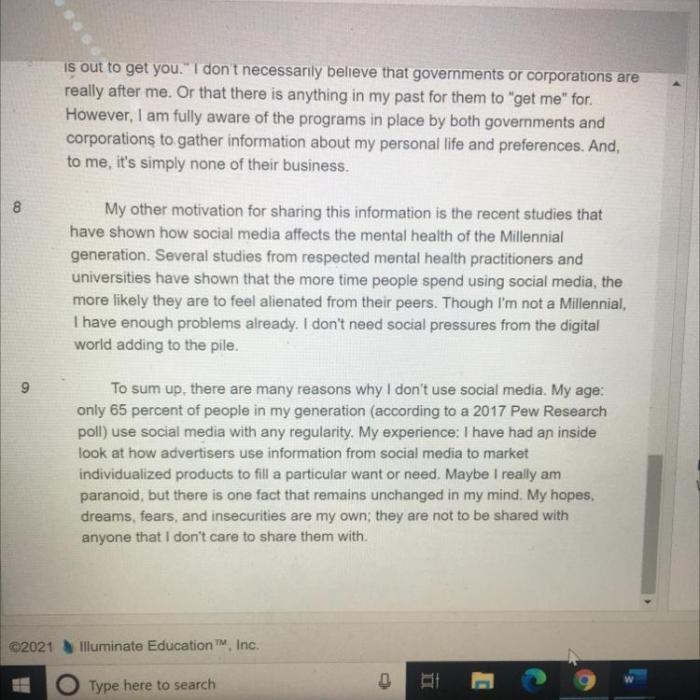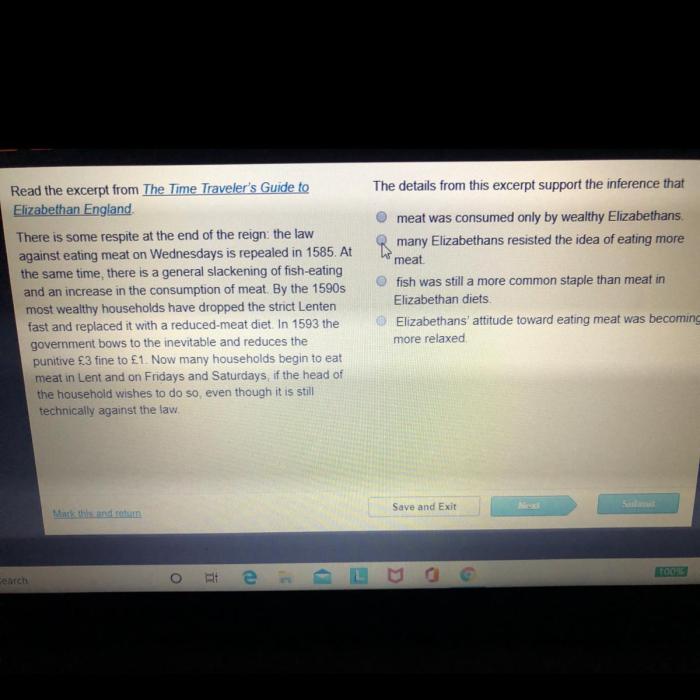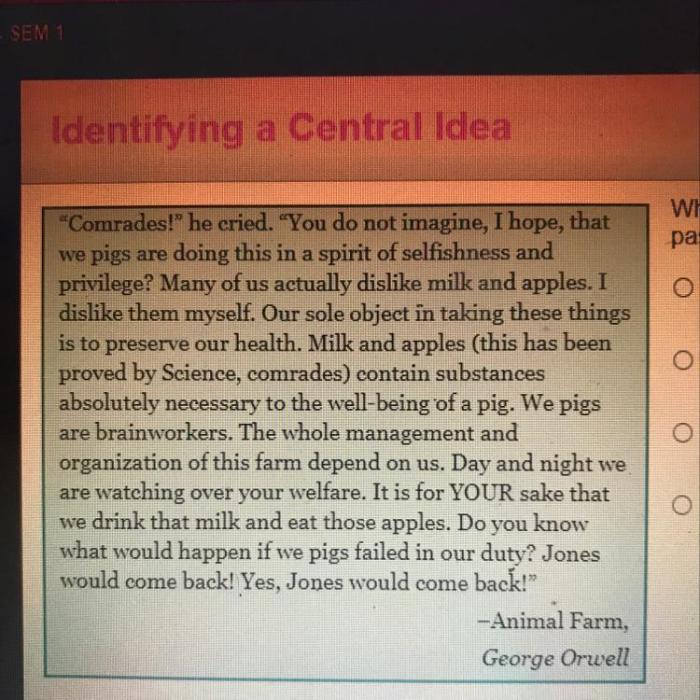Which statement best explains the central idea from the passage – The central idea of a passage is its main argument or thesis. It is the core concept that the author is trying to convey to the reader. Identifying the central idea is essential for understanding the passage as a whole.
In this guide, we will provide a step-by-step process for identifying the central idea of a passage. We will also discuss some common pitfalls to avoid and provide tips for writing a clear and concise statement of the central idea.
Explain the Central Idea: Which Statement Best Explains The Central Idea From The Passage

The central idea of the passage revolves around the concept of “cognitive dissonance,” which refers to the psychological discomfort experienced when an individual holds two or more contradictory beliefs, values, or attitudes. This discomfort motivates individuals to seek ways to reduce the dissonance by changing their beliefs, values, or attitudes, or by acquiring new information that supports their existing beliefs.
Key Points Supporting the Central Idea, Which statement best explains the central idea from the passage
- Cognitive dissonance arises when individuals hold conflicting beliefs or attitudes.
- This dissonance creates psychological discomfort, motivating individuals to resolve it.
- Individuals may change their beliefs, values, or attitudes to reduce dissonance.
- Alternatively, individuals may seek new information that supports their existing beliefs.
Significance of the Central Idea
The concept of cognitive dissonance provides insights into the human tendency to maintain consistency in their beliefs and attitudes. It explains why individuals may resist changing their beliefs, even when presented with compelling evidence to the contrary. Furthermore, it highlights the role of motivation in shaping human behavior, as individuals are driven to reduce dissonance and achieve psychological comfort.
FAQ Overview
What is the central idea of a passage?
The central idea of a passage is its main argument or thesis. It is the core concept that the author is trying to convey to the reader.
How do I identify the central idea of a passage?
To identify the central idea of a passage, follow these steps:
- Read the passage carefully.
- Identify the main topic of the passage.
- Look for the author’s purpose for writing the passage.
- Formulate a statement that expresses the author’s main argument or thesis.
What are some common pitfalls to avoid when identifying the central idea of a passage?
Some common pitfalls to avoid when identifying the central idea of a passage include:
- Focusing on minor details.
- Confusing the central idea with a supporting idea.
- Stating the central idea as a fact.
- Writing a statement that is too vague or general.
How can I write a clear and concise statement of the central idea?
To write a clear and concise statement of the central idea, follow these tips:
- Use strong verbs.
- Be specific and avoid generalizations.
- Keep it brief.
- Proofread your statement carefully.

